begin quote from:
Tibetan Buddhism - Wikipedia, the free encyclopedia
Tibetan Buddhism
From Wikipedia, the free encyclopedia
| Part of a series on |
| Tibetan Buddhism |
|---|
 |
| Part of a series on |
| Mahāyāna Buddhism |
|---|
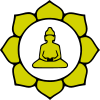 |
| Mahayana Buddhism portal |
The Tibetan diaspora has spread Tibetan Buddhism to many Western countries, where the tradition has gained popularity.[5] Among its prominent exponents is the 14th Dalai Lama of Tibet. The number of its adherents is estimated to be between ten and twenty million.[6]
Contents
- 1 Buddhahood
- 2 General methods of practice
- 3 Origins
- 4 Native Tibetan developments
- 5 Study of tenet systems
- 6 Schools
- 7 Monasticism
- 8 Spread to the Mongols
- 9 Tibetan Buddhism in the contemporary world
- 10 Women and the ordination of bhikṣuṇī
- 11 Glossary of terms used
- 12 See also
- 13 Notes
- 14 References
- 15 Further reading
- 16 External links
Buddhahood
Buddhahood is defined as a state free of the obstructions to liberation as well as those to omniscience.[10] When one is freed from all mental obscurations,[11] one is said to attain a state of continuous bliss mixed with a simultaneous cognition of emptiness,[12] the true nature of reality.[13] In this state, all limitations on one's ability to help other living beings are removed.[14]
It is said that there are countless beings who have attained buddhahood.[15] Buddhas spontaneously, naturally and continuously perform activities to benefit all sentient beings.[16] However it is believed that one's karma could limit the ability of the Buddhas to help them. Thus, although Buddhas possess no limitation from their side on their ability to help others, sentient beings continue to experience suffering as a result of the limitations of their own former negative actions.[17]
General methods of practice
Buddhist monk Geshe Konchog Wangdu reads Mahayana sutras from an old woodblock copy of the Tibetan Kangyur
Transmission and realization
There is a long history of oral transmission of teachings in Tibetan Buddhism. Oral transmissions by lineage holders traditionally can take place in small groups or mass gatherings of listeners and may last for seconds (in the case of a mantra, for example) or months (as in the case of a section of the Tibetan Buddhist canon). It is held that a transmission can even occur without actually hearing, as in Asanga's visions of Maitreya.An emphasis on oral transmission as more important than the printed word derives from the earliest period of Indian Buddhism, when it allowed teachings to be kept from those who should not hear them.[18] Hearing a teaching (transmission) readies the hearer for realization based on it. The person from whom one hears the teaching should have heard it as one link in a succession of listeners going back to the original speaker: the Buddha in the case of a sutra or the author in the case of a book. Then the hearing constitutes an authentic lineage of transmission. Authenticity of the oral lineage is a prerequisite for realization, hence the importance of lineages.
Analytic meditation and fixation meditation
Spontaneous realization on the basis of transmission is possible but rare. Normally an intermediate step is needed in the form of analytic meditation, i.e., thinking about what one has heard. As part of this process, entertaining doubts and engaging in internal debate over them is encouraged in some traditions.[19]Analytic meditation is just one of two general methods of meditation. When it achieves the quality of realization, one is encouraged to switch to "focused" or "fixation" meditation. In this the mind is stabilized on that realization for periods long enough to gradually habituate it to it.
A person's capacity for analytic meditation can be trained with logic. The capacity for successful focused meditation can be trained through samatha. A meditation routine may involve alternating sessions of analytic meditation to achieve deeper levels of realization, and focused meditation to consolidate them.[13] The deepest level of realization is Buddhahood itself.
Devotion to a guru
See also: Guru in Buddhism
As in other Buddhist traditions, an attitude of reverence for the teacher, or guru, is also highly prized.[20] At the beginning of a public teaching, a lama will do prostrations
to the throne on which he will teach due to its symbolism, or to an
image of the Buddha behind that throne, then students will do
prostrations to the lama after he is seated. Merit accrues when one's
interactions with the teacher are imbued with such reverence in the form
of guru devotion, a code of practices governing them that derives from
Indian sources.[21]
By such things as avoiding disturbance to the peace of mind of one's
teacher, and wholeheartedly following his prescriptions, much merit
accrues and this can significantly help improve one's practice.There is a general sense in which any Tibetan Buddhist teacher is called a lama. A student may have taken teachings from many authorities and revere them all as lamas in this general sense. However, he will typically have one held in special esteem as his own root guru and is encouraged to view the other teachers who are less dear to him, however more exalted their status, as embodied in and subsumed by the root guru.[22] Often the teacher the student sees as root guru is simply the one who first introduced him to Buddhism, but a student may also change his personal view of which particular teacher is his root guru any number of times.
Skepticism
Skepticism is an important aspect of Tibetan Buddhism. A critical attitude is encouraged to promote abilities in analytic meditation. In favor of skepticism towards Buddhist doctrines in general, Tibetans are fond of quoting sutra to the effect that one should test the Buddha's words as one would the quality of gold.[23]The opposing principles of skepticism and guru devotion are reconciled with the Tibetan injunction to scrutinize a prospective guru thoroughly before finally adopting him as such without reservation. A Buddhist may study with a lama for decades before finally accepting him as his own guru.
Preliminary practices and approach to Vajrayāna
The Vajrayāna deity, Vajrasattva
The aim of preliminary practices (ngöndro) is to start the student on the correct path for such higher teachings.[25] Just as Sutrayāna preceded Vajrayāna historically in India, so sutra practices constitute those that are preliminary to tantric ones. Preliminary practices include all Sutrayāna activities that yield merit like hearing teachings, prostrations, offerings, prayers and acts of kindness and compassion, but chief among the preliminary practices are realizations through meditation on the three principle stages of the path: renunciation, the altruistic bodhicitta wish to attain enlightenment and the wisdom realizing emptiness. For a person without the basis of these three in particular to practice Vajrayāna can be like a small child trying to ride an unbroken horse.[26]
While the practices of Vajrayāna are not known in Sutrayāna, all Sutrayāna practices are common to Vajrayāna. Without training in the preliminary practices, the ubiquity of allusions to them in Vajrayāna is meaningless and even successful Vajrayāna initiation becomes impossible.
The merit acquired in the preliminary practices facilitates progress in Vajrayāna. While many Buddhists may spend a lifetime exclusively on sutra practices, however, an amalgam of the two to some degree is common. For example, in order to train in calm abiding, one might use a tantric visualisation as the meditation object.
Esotericism
In Vajrayāna particularly, Tibetan Buddhists subscribe to a voluntary code of self-censorship, whereby the uninitiated do not seek and are not provided with information about it. This self-censorship may be applied more or less strictly depending on circumstances such as the material involved. A depiction of a mandala may be less public than that of a deity. That of a higher tantric deity may be less public than that of a lower. The degree to which information on Vajrayāna is now public in western languages is controversial among Tibetan Buddhists.Buddhism has always had a taste for esotericism since its earliest period in India.[27] Tibetans today maintain greater or lesser degrees of confidentiality also with information on the vinaya and emptiness specifically. In Buddhist teachings generally, too, there is caution about revealing information to people who may be unready for it.
Origins
See also: History of Tibetan Buddhism
Tibetan Buddhism derives from the latest stage of north Indian Buddhism.[28]Native Tibetan developments
A distinct feature of Tibetan Buddhism is the system of incarnate lamas,[29] but such genuine innovations have been few.[30] A small corpus of extra-canonical scripture, the treasure texts (terma) is acknowledged by some practitioners, but the bulk of the canon that is not commentary was translated from Indian sources. True to its roots in the Pāla system of North India, however, Tibetan Buddhism carries on a tradition of eclectic accumulation and systematisation of diverse Buddhist elements, and pursues their synthesis. Prominent among these achievements have been the Stages of the Path and motivational training.Study of tenet systems
Monks debating in Drepung Monastery
Two belong to the older path referred to as the Hinayana:
- Vaibhāṣika (Wylie: bye brag smra ba)
- Sautrāntika (Wylie: mdo sde pa)
The other two are Mahayana:
- Yogācāra, also called Cittamātra "Mind-Only" (Wylie: sems-tsam-pa)
- Madhyamaka (Wylie: dbu-ma-pa)
The tenet system is used in the monasteries and colleges to teach Buddhist philosophy in a systematic and progressive fashion, each philosophical view being more subtle than its predecessor. Therefore, the four schools can be seen as a gradual path from a rather easy-to-grasp, "realistic" philosophical point of view, to more and more complex and subtle views on the ultimate nature of reality, that is on emptiness and dependent arising, culminating in the philosophy of the Mādhyamikas, which is widely believed to present the most sophisticated point of view.[31]
Schools
(Adapted, with modifications, from yogi Milarepa, by W. Y. Evans-Wentz (1928), p. 14)
Nyingma
"The Ancient Ones" is the oldest school of Tibetan Buddhism and the original order founded by Padmasambhava and Śāntarakṣita.[34] Whereas other schools categorize their teachings into the three yānas or "vehicles", Hinayana, Mahayana and Vajrayana, the Nyingma tradition classifies its teachings into Nine Yānas, among the highest of which is Dzogchen.[35] Terma "treasures" (revealed texts) are of particular significance to the Nyingma school.Kagyu(pa)
Kalu Rinpoche (right) and Lama Denys at Karma Ling Institute, Savoy
Sakya
The "Grey Earth" school represents the scholarly tradition. Headed by the Sakya Trizin, this tradition was founded by Khön Könchok Gyelpo (Wylie: 'khon dkon mchog rgyal po, 1034–1102), a disciple of the great lotsāwa Drogmi Shākya (Wylie: brog mi lo tsā wa ye shes) and traces its lineage to the mahasiddha Virūpa.[34] A renowned exponent, Sakya Pandita (1182–1251CE), was the great-grandson of Khön Könchok Gyelpo.Gelug
The "Way of Virtue" school was originally a reformist movement and is known for its emphasis on logic and debate. The order was founded in the 14th to 15th century by Je Tsongkhapa, renowned for both his scholarship and virtue. Its spiritual head is the Ganden Tripa and its temporal one the Dalai Lama. The Dalai Lama is regarded as the embodiment of Avalokiteśvara. Successive Dalai Lamas ruled Tibet from the mid-17th to mid-20th centuries.These first four major schools are sometimes said to constitute the Nyingma "Old Translation" and Sarma "New Translation" traditions, the latter following from the historical Kadam lineage of translations and tantric lineages. Another common but trivial differentiation is into the Yellow Hat (Gelug) and Red Hat (non-Gelug) sects, a division that mirrors the distinction between the schools involved in the Rimé movement versus the one that did not, the Gelug.[citation needed] The correspondences are as follows:
| Nyingma | Kagyu | Sakya | Gelug |
|---|---|---|---|
| Old Translation | New Translation | New Translation | New Translation |
| Red Hat | Red Hat | Red Hat | Yellow Hat |
| Rimé | Rimé | Rimé | non-Rimé |
Jonang
The Jonang is a minor school that branched off from Sakya traditions; it was suppressed in 1650 in Gelug-controlled regions and subsequently banned and its monks and nuns converted to the Gelug school in 1658.The Jonang re-established their religio-political center in Golok, Nakhi and Mongol areas in Kham and Amdo centered at Dzamthang Monastery and have continued practicing uninterrupted to this day. An estimated 5,000 monks and nuns of the Jonang tradition practice today in these areas and at the edges of historic Gelug influence.
However, their teachings were limited to these regions until the Rimé movement of the 19th century encouraged the study of non-Gelug schools of thought and practice.[36] In modern times it has been encouraged to grow by the 14th Dalai Lama, who installed the 9th Jebtsundamba Khutughtu as its head.
Monasticism
See also: List of Tibetan monasteries
Lamayuru monastery
In Mongolia during the 1920s, approximately one third of the male population were monks, though many lived outside monasteries. By the beginning of the 20th century about 750 monasteries were functioning in Mongolia.[38] These monasteries were largely dismantled during Communist rule, but many have been reestablished during the Buddhist revival in Mongolia which followed the fall of Communism.[39]
Monasteries generally adhere to one particular school. Some of the major centers in each tradition are as follows:
Nyingma lineage is said to have "six mother monasteries" each of which has numerous associated branch monasteries:
Samye the first monastery in Tibet, established by Padmasambhāva and Śāntarakṣita was later taken over by the Sakya tradition.
- Drigung Monastery — the seat of the Könchog Tenzin Kunzang Thinley Lhundrub
- Palpung Monastery — the seat of the Tai Situpa and Jamgon Kongtrul
- Ralung Monastery — the seat of the Gyalwang Drukpa
- Surmang Monastery — the seat of the Trungpa tülkus
- Tsurphu Monastery — the seat of H.H. the Gyalwa Karmapa
- Ngor
- Sakya Monastery — the seat of H.H. the Sakya Trizin
- Shalu
Young monk, Sikkim, India (1991)
- Drepung Monastery — the home monastery of the Dalai Lama
- Ganden Monastery — the seat of the Ganden Tripa
- Sera Monastery
- Tashilhunpo Monastery in Shigatse — founded by the first Dalai Lama, now the seat of the Panchen Lama
- Takten Phuntsok Ling Monastery Shimla, gift from the Dalai Lama - seat of Khalkha Jetsun Dhampa Rinpoche [40]
- Jonang Shimla Monastery - seat of Khenpo Choekyi Nangwa Rinpoche
- Tsangwa Monastery in Dzamthang is one of the largest with home to about 1,500 monks
- Menri, re-founded in Himachal Pradesh - seat of the 33rd abbot Menri Trizin
- Triten Norbutse Monastery in Nepal
- The Redna Menling Nunnery
- Mahayana Monastery — the seat of the H.H Kadhampa Dharmaraja (The 25th Atisha Jiangqiu Tilei), Nepal
- Labrang Monastery in eastern Amdo
- Kumbum Jampaling in central Amdo
- Jokhang Temple in Lhasa — said to have been built by King Songtsen Gampo in 647 AD part of the UNESCO Tsangwa
The statue of Buddha in Ulaanbaatar, Mongolia
Spread to the Mongols
Buddhists entered the service of the Mongol Empire in the early 13th century. Buddhist monasteries established in Karakorum were granted tax exempt status, though the religion was not given official status by the Mongols until later. All variants of Buddhism, such as Chinese, Tibetan and Indian Buddhism flourished, though Tibetan Buddhism was eventually favored at the imperial level under emperor Möngke, who appointed Namo from Kashmir as chief of all Buddhist monks.Tantric style Tibetan Buddhism was possibly first spread to the Mongols via the Tangut state of Western Xia.[41][42]
During the Yuan dynasty founded by Kublai Khan, the Tibetan Buddhism became the de-facto state religion of the Yuan. The top-level department and government agency known as the Bureau of Buddhist and Tibetan Affairs (Xuanzheng Yuan) was set up in Khanbaliq (modern Beijing) to supervise Buddhist monks throughout the empire. The Sakya Imperial Preceptors were active at the Yuan court and enjoyed special power.[43] During this period Tibetan Buddhism was not only practiced within the capital Beijing or the Tibetan Plateau but throughout the country. For instance, Hangzhou, capital of the former Southern Song dynasty and the largest city in the Yuan realm, became an important hub of the activities of Tibetan Buddhism, which took public or official precedence over Han Chinese Buddhism. Similarly, Mount Wutai, the sacred site of Bodhisattva Manjusri and the holy mountain of Chinese Buddhist pilgrims, was greatly influenced by Tibetan Buddhism.[44]
Similar to the Yuan dynasty, Shamanism and Buddhism were once the dominant religions among the ruling class of the Mongol khanates of Golden Horde and Ilkhanate, the two western khanates of the Mongol Empire. In the early days, the rulers of both khanates increasingly adopted Tibetan Buddhism, resembling the Yuan dynasty at that time. However, the Mongol rulers Ghazan of Ilkhanate and Uzbeg of Golden Horde converted to Islam in 1295 AD and 1313 AD respectively. Yuan dynasty based in China and Mongolia later became the only division of the Mongol Empire that did not embrace Islam, but instead favored Tibetan Buddhism to the end of the dynasty.
The Chinese Ming dynasty also deliberately helped to propagate Tibetan Buddhism instead of Chinese Buddhism among the Mongols. The Ming assisted Altan Khan, King of the Tümed Mongols, when he requested aid in propagating Lamaism.[45]
During the early period of the Northern Yuan dynasty, Shamanism again became the sole dominant religion in Mongolia, but the last sixty years before the death of the last khan Ligdan Khan are marked by intensive penetration of Tibetan Buddhism into Mongolian society. In 1578, Sonam Gyatso was invited to Mongolia and had converted Altan Khan to Buddhism along with his tribe (the first Mongol tribe to be so converted), the King conferred the title "Dalai" on him, "Dalai" being the Mongolian translation of his Tibetan name "Gyatso", which means "sea" or "ocean".[46] This is where the title Dalai Lama came from. Within 50 years nearly all Mongols had become Buddhists, including tens of thousands of monks, almost all followers of the Gelug school and loyal to the Dalai Lama.[47] Since then Tibetan Buddhism played a very important role among the Mongols. It was the single important religion among the Mongols under Qing rule, as well as the state religion of the Kalmyk Khanate, Dzungar Khanate and the Khoshut Khanate. The Tibetan Buddhism was also adored by the Qing court since both Mongols and Tibetans believed in Tibetan Buddhism.
Some historians viewed the promotion of Lamaist Buddhism among the Mongols by the Ming and Qing as a deliberate plot to weaken the Mongol's military prowess, but others reject the theory.
Tibetan Buddhism in the contemporary world
Today, Tibetan Buddhism is adhered to widely in the Tibetan Plateau, Nepal, Bhutan, Mongolia, Kalmykia (on the north-west shore of the Caspian), Siberia and Russian Far East (Tuva and Buryatia). The Indian regions of Sikkim and Ladakh, both formerly independent kingdoms, are also home to significant Tibetan Buddhist populations. In the wake of the Tibetan diaspora, Tibetan Buddhism has gained adherents in the West and throughout the world. Celebrity practitioners include Brandon Boyd, Richard Gere, Adam Yauch, Jet Li, Sharon Stone, Allen Ginsberg, Philip Glass, Mike Barson and Steven Seagal (who has been proclaimed the reincarnation of the tulku Chungdrag Dorje).[48] Fully ordained Tibetan Buddhist Monks also work in academia (see Ven. Alex Bruce ('Tenpa')).[49]In Buddhism in China (Princeton University Press, 1965), Kenneth Chen proposed the idea that Buddhism adapts itself to its host culture. A more traditional viewpoint is that the Dharma is like a Yak, able to carry the "baggage" of culture and religion of the societies in which it gains hold, thus giving rise to the various "Buddhisms". Within this view the various "adaptations" Buddhism undergoes are actually nothing more than the unloading and reloading of the "Yak of the Dharma" with different local 'baggage'.
"Adaptations" of Buddhism to contemporary Western culture include Tricycle magazine and the modern notion of a dharma center. Buddhist author Michaela Haas notes that Tibetan Buddhism is undergoing a sea change in the West. "Of all these changes that we are watching Buddhism undergo in the West, the most momentous may be that women are playing an equal role."[50]
Women and the ordination of bhikṣuṇī
Further information: Women in Buddhism and Ordination of women in Buddhism
Under the Mulasarvastivadin Vinaya, as with the two other extant Vinaya lineages today (Theravada and Dharmaguptaka), in order to ordain bhikṣuṇīs, there must be quorums of both bhikṣuṇīs and bhikṣus; without both, a woman cannot be ordained as a nun (Tibetan: དགེ་སློང་མ་, THL: gélongma). When Buddhism traveled from India to Tibet, apparently the quorum of bhikṣuṇīs required for bestowing full ordination never reached Tibet.[51]Despite an absence of ordination there, bhikṣuṇīs did travel to Tibet. A notable example was the Sri Lankan nun Candramāla, whose work with Śrījñāna (Wylie: dpal ye shes) resulted in the tantric text Śrīcandramāla Tantrarāja (Tibetan: དཔལ་ཟླ་བའི་ཕྲེང་བའི་རྒྱུད་ཀྱི་རྒྱལ་པོ, Chinese: 吉祥月鬘本續王).[52]
There are singular accounts of fully ordained Tibetan women, such as the Samding Dorje Phagmo (1422-1455), who was once ranked the highest female master in Tibet, but very little is known about the exact circumstances of their ordination.[53]
The Dalai Lama has authorized followers of the Tibetan tradition to be ordained as nuns in traditions that have such ordination.
According to Thubten Chodron, the current Dalai Lama has said on this issue:[54]
- In 2005, the Dalai Lama repeatedly spoke about the bhikṣuṇī ordination in public gatherings. In Dharamsala, he encouraged, "We need to bring this to a conclusion. We Tibetans alone can't decide this. Rather, it should be decided in collaboration with Buddhists from all over the world. Speaking in general terms, were the Buddha to come to this 21st century world, I feel that most likely, seeing the actual situation in the world now, he might change the rules somewhat...."
- Later, in Zurich during a 2005 conference of Tibetan Buddhist Centers, His Holiness said, "Now I think the time has come; we should start a working group or committee" to meet with monks from other Buddhist traditions. Looking at the German bhikṣuṇī Jampa Tsedroen, he instructed, "I prefer that Western Buddhist nuns carry out this work… Go to different places for further research and discuss with senior monks (from various Buddhist countries). I think, first, senior bhikshunis need to correct the monks' way of thinking.
- "This is the 21st century. Everywhere we are talking about equality….Basically Buddhism needs equality. There are some really minor things to remember as a Buddhist--a bhikshu always goes first, then a bhikshuni….The key thing is the restoration of the bhikshuni vow."
Sometimes in religion there has been an emphasis on male importance. In Buddhism, however, the highest vows, namely the bhikshu and bhikshuni ones, are equal and entail the same rights. This is the case despite the fact that in some ritual areas, due to social custom, bhikshus go first. But Buddha gave the basic rights equally to both sangha groups. There is no point in discussing whether or not to revive the bhikshuni ordination; the question is merely how to do so properly within the context of the Vinaya.[34]Pema Chödrön is an American woman who was ordained as a bhikṣuṇī in a lineage of Tibetan Buddhism in 1981. Pema Chödrön was the first American woman to be ordained as a Buddhist nun in the Tibetan Buddhist tradition.[55][56]
In 2010 the first Tibetan Buddhist nunnery in America, Vajra Dakini Nunnery in Vermont, was officially consecrated. It offers novice ordination and follows the Drikung Kagyu lineage of Buddhism. The abbot of the Vajra Dakini nunnery is Khenmo Drolma, an American woman, who is the first bhikṣuṇī in the Drikung lineage of Buddhism, having been ordained in Taiwan in 2002.[57][58] She is also the first westerner, male or female, to be installed as an abbot in the Drikung Kagyu lineage of Buddhism, having been installed as the abbot of the Vajra Dakini Nunnery in 2004.[57] The Vajra Dakini Nunnery does not follow The Eight Garudhammas.[59]
In April 2011, the Institute for Buddhist Dialectical Studies (IBD) in Dharamsala, India, conferred the degree of geshe, a Tibetan Buddhist academic degree for monastics, to Kelsang Wangmo, a German nun, thus making her the world's first female geshe.[60][60][61] In 2013 Tibetan women were able to take the Geshe exams for the first time.[62]
Glossary of terms used
| English | spoken Tibetan | Wylie Tibetan | Sanskrit transliteration |
|---|---|---|---|
| affliction | nyönmong | nyon-mongs | kleśa |
| analytic meditation | jegom | dpyad-sgom | yauktika dhyāna |
| calm abiding | shiné | zhi-gnas | śamatha |
| devotion to the guru | lama-la tenpa | bla-ma-la bsten-pa | guruparyupāsati |
| fixation meditation | joggom | 'jog-sgom | nibandhita dhyāna |
| foundational vehicle | t’ek män | theg sman | hīnayāna |
| incarnate lama | tülku | sprul-sku | nirmānakāya |
| inherent existence | rangzhingi drubpa | rang-bzhin-gyi grub-pa | svabhāvasiddha |
| mind of enlightenment | changchub sem | byang-chhub sems | bodhicitta |
| motivational training | lojong | blo-sbyong | autsukya dhyāna |
| omniscience | t’amcé k’yempa | thams-cad mkhyen-pa | sarvajña |
| preliminary practices | ngöndro | sngon-'gro | prārambhika kriyāni |
| root guru | zawé lama | rtsa-ba'i bla-ma | mūlaguru |
| stages of the path | lamrim | lam-rim | pātheya |
| transmission and realisation | lungtok | lung-rtogs | āgamādhigama |
See also
Tibetan letter "A", the symbol of rainbow body
- Tibetan Buddhist History
- Derge Parkhang
- Mahamudra
- Milarepa
- Nagarjuna
- Ngagpa
- Padmasambhava
- Pure Land Buddhism (Tibetan)
- Samaya
- Schools of Buddhism
- Shambhala Buddhism
- Songs of realization
- Tibetan art
- Tibetan prayer wheel
- Tibetan prayer flag
- Tibetan Buddhist teachers (category)
- Traditional Tibetan medicine
- Wrathful deities
Notes
- Haas, Michaela. "Buddhist nun professors or none? – OnFaith". The Washington Post.
References
- Ancient Tibet: Research Materials from The Yeshe De Project. Dharma Publishing, Berkeley, California. ISBN 0-89800-146-3.
- Coleman, Graham, ed. (1993). A Handbook of Tibetan Culture. Boston: Shambhala Publications, Inc.. ISBN 1-57062-002-4.
- Conze, Edward (1993). A Short History of Buddhism (2nd ed.). Oneworld. ISBN 1-85168-066-7.
- Dhargyey, Geshe Ngawang; ed. Alexander Berzin, based on oral trans. by Sharpa Tulku (1978). Tibetan Tradition of Mental Development (3rd ed.). Dharmsala: Library of Tibetan Works and Archives. Cite uses deprecated parameter
|coauthors=(help) [A pithy lam-rim by a geshe appointed in 1973 by the Dalai Lama as head of the translation team at the Tibetan Library.] - Dhargyey, Geshe Ngawang; ed. Alexander Berzin, based on oral trans. by Sharpa Tulku (1982). An Anthology of Well-Spoken Advice on the Graded Paths of the Mind, Vol. I. Dharmsala: Library of Tibetan Works and Archives. ISBN 81-86470-29-8. Cite uses deprecated parameter
|coauthors=(help) [The first part of a more extensive lam-rim by a geshe appointed in 1973 by the Dalai Lama as head of the translation team at the Tibetan Library. The language of this publication is very different from that of the 1978 work by the same lama due to widespread changes in choice of English terminology by the translators.] - Hill, John E. "Notes on the Dating of Khotanese History." Indo-Iranian Journal, Vol. 13, No. 3 July 1988. To purchase this article see: [1]. An updated version of this article is available for free download (with registration) at: [2]
- Hopkins, Jeffrey (1996). Meditation on Emptiness. Boston: Wisdom. ISBN 0-86171-110-6. [Definitive treatment of emptiness according to the Prasaṅgika-Madhyamaka school.]
- pha bong kha pa byams pa bstan ʼdzin ʼphrin las rgya mtsho; khri byang blo bzang ye shes bstan ʼdzin rgya mtsho; Michael Richards (3 November 2006). Liberation in the Palm of Your Hand: A Concise Discourse on the Path to Enlightenment. Simon and Schuster. ISBN 978-0-86171-500-8. Cite uses deprecated parameter
|coauthors=(help) - Lati Rinpoche; trans. & ed.: Elizabeth Napper (1980). Mind
in Tibetan Buddhism: Oral Commentary on Ge-shay Jam-bel-sam-pel’s
"Presentation of Awareness and Knowledge Composite of All the Important
Points Opener of the Eye of New Intelligence. Valois, NY: Snow Lion. ISBN 0-937938-02-5. Cite uses deprecated parameter
|coauthors=(help) - Mullin, Glenn H (15 December 2008). Living in the Face of Death: The Tibetan Tradition. Snow Lion Publications. ISBN 978-1-55939-908-1.
- Nyanaponika Thera (1965). The Heart of Buddhist Meditation. Boston: Weiser. ISBN 0-87728-073-8.
- Powers, John. History as Propaganda: Tibetan Exiles versus the People's Republic of China (2004) Oxford University Press. ISBN 978-0-19-517426-7
- Ringu Tulku. The Ri-Me Philosophy of Jamgon Kongtrul the Great: A Study of the Buddhist Lineages of Tibet. Shambhala. ISBN 1-59030-286-9.
- Smith, E. Gene (2001). Among Tibetan Texts: History and Literature of the Himalayan Plateau. Boston: Wisdom Publications. ISBN 0-86171-179-3
- Sopa, Geshe Lhundup; Jeffrey Hopkins (1977). Practice and Theory of Tibetan Buddhism. New Delhi: B.I. Publications. ISBN 0-09-125621-6. [Part Two of this book, ‘’Theory: Systems of Tenets’’ is an annotated translation of ‘’Precious Garland of Tenets (Grub-mtha’ rin-chhen phreng-ba)’’ by Kön-chok-jik-may-wang-po (1728-1791).]
- Tsomo, Karma Lekshe (1 April 1999). Buddhist Women Across Cultures: Realizations. State University of New York Press. ISBN 978-0-7914-4138-1.
- The Great Treatise on the Stages of the Path to Enlightenment
- Tsong-kha-pa; the Lamrim Chenmo Translation Committee; Joshua Cutler, ed. in chief; Guy Newland, ed. (2000). The Great Treatise on the Stages of the Path to Enlightenment, Volume I. Canada: Snow Lion. ISBN 1-55939-152-9. Cite uses deprecated parameter
|coauthors=(help) - Tsong-kha-pa; the Lamrim Chenmo Translation Committee; Joshua Cutler, ed. in chief; Guy Newland, ed. (2002). The Great Treatise on the Stages of the Path to Enlightenment, Volume II. Canada: Snow Lion. ISBN 1-55939-168-5. Cite uses deprecated parameter
|coauthors=(help) - Tsong-kha-pa; the Lamrim Chenmo Translation Committee; Joshua Cutler, ed. in chief; Guy Newland, ed. (2004). The Great Treatise on the Stages of the Path to Enlightenment, Volume III. Canada: Snow Lion. ISBN 1-55939-166-9. Cite uses deprecated parameter
|coauthors=(help)
- Tsong-kha-pa; the Lamrim Chenmo Translation Committee; Joshua Cutler, ed. in chief; Guy Newland, ed. (2000). The Great Treatise on the Stages of the Path to Enlightenment, Volume I. Canada: Snow Lion. ISBN 1-55939-152-9. Cite uses deprecated parameter
- Wallace, B. Alan (1999), "The Buddhist Tradition of Samatha: Methods for Refining and Examining Consciousness", Journal of Consciousness Studies 6 (2-3): 175-187 .
Further reading
- Introductory books
- Wallace, B. Alan (October 25, 1993). Tibetan Buddhism From the Ground Up: A Practical Approach for Modern Life. Wisdom Publications. ISBN 0-86171-075-4, ISBN 978-0-86171-075-1
- Yeshe, Lama Thubten (2001). "The Essence of Tibetan Buddhism". Lama Yeshe Wisdom Archive. ISBN 1-891868-08-X
- Other books
- Coleman, Graham, ed. (1993). A Handbook of Tibetan Culture. Boston: Shambhala Publications, Inc.. ISBN 1-57062-002-4.
- Lati Rinpoche; trans. & ed.: Elizabeth Napper (1980). Mind
in Tibetan Buddhism: Oral Commentary on Ge-shay Jam-bel-sam-pel’s
"Presentation of Awareness and Knowledge Composite of All the Important
Points Opener of the Eye of New Intelligence. Valois, NY: Snow Lion. ISBN 0-937938-02-5. Cite uses deprecated parameter
|coauthors=(help) - Ringu Tulku. The Ri-Me Philosophy of Jamgon Kongtrul the Great: A Study of the Buddhist Lineages of Tibet. Shambhala. ISBN 1-59030-286-9.
- Smith, E. Gene (2001). Among Tibetan Texts: History and Literature of the Himalayan Plateau. Boston: Wisdom Publications. ISBN 0-86171-179-3
- Articles
- Cabezón, José Ignacio. "Tibetan Buddhist Society." In: Juergensmeyer, Mark (editor). The Oxford Handbook of Global Religions. October 2006. Published online in September 2009. DOI: 10.1093/oxfordhb/9780195137989.003.0010
External links
Student film about Tibetan Monks studying at Emory University [3]
| Wikimedia Commons has media related to Tibetan Buddhism. |
| Wikiversity has learning materials about Buddha oracle#10 The Cosmos (Tibetan Buddhism) |
- Tibetan Buddhism at DMOZ
- Buddhist Meditation Traditions in Tibet: The Union of Three Vehicles by Georgios T. Halkias
- LamRim.com — Tibetan Buddhist Internet Radio
- The Tibetan and Himalayan Digital Library
- The Tibetan Buddhist Resource Center
- the Tibetan bibliography database
- Tibetan Buddhism in the West by Dzongsar Khyentse Rinpoche
- Songtsen — The rescue and preservation of Tibet's cultural and spiritual traditions
- Famous Monasteries of Tibet
- Tibetan Buddhism: History and the Four Traditions
- The extensive archives of teachings from Alexander Berzin
- Lotsawa House | Tibetan Buddhist Texts | Translations
- Tibetan Rimé Text Library — Buddhist Text Library of all traditions
- Tibetan Buddhism Forums
- A Day In The Life Of A Tibetan Monk - article and slideshow by National Geographic
- Tibetan Buddhist Practice eCalendar
- Karma Kagyü Calendar
- Tibetan Philosophy article in the Internet Encyclopedia of Philosophy
|
||||
|
||
|
||
|
||
|
||
|


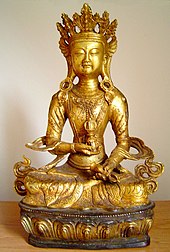



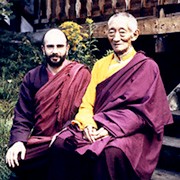
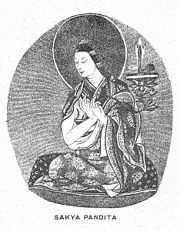
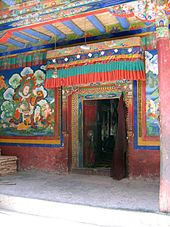

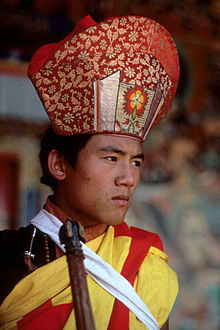


No comments:
Post a Comment